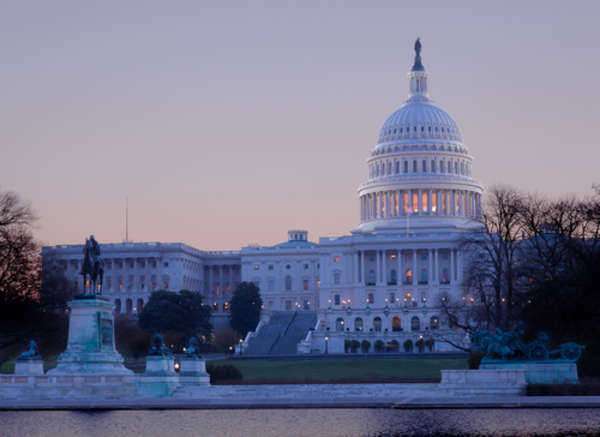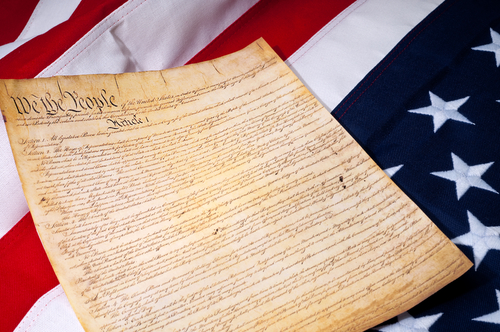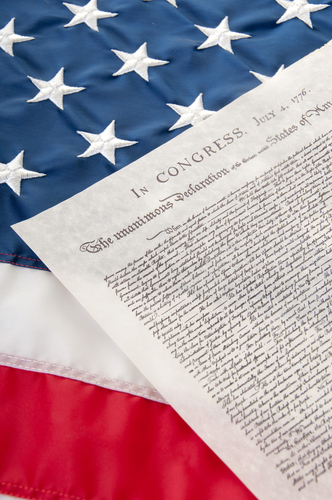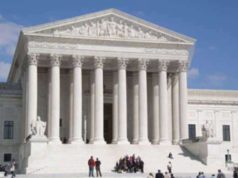
The Twentieth Amendment to the United States Constitution, also known as the “Lame Duck Amendment,” drastically changed the way presidential inaugurations and congressional sessions are held in the United States. It was ratified in 1933, and has had a significant impact on the American political landscape ever since.
The Twentieth Amendment’s most significant change was to shorten the lame duck period. This period refers to the time between the November election and the inauguration of a new president or the start of a new congressional session. Prior to the Twentieth Amendment, this period lasted from election day in November until March 4 of the following year, a full four months after the election.
The Twentieth Amendment shortened this period significantly. Now, the lame duck period ends on January 20th of the year following the election for both the president and Congress. This change allows for a smoother transition of power and ensures that new leaders can begin their work in a timely and efficient manner.
The Twentieth Amendment was seen as a necessary change due to the potential for abuse during the long lame duck period. Outgoing officials sometimes took advantage of their remaining time in office to push through unpopular policies or to act in their own self-interest rather than in the interest of the American people.
Another important aspect of the Twentieth Amendment is that it clarifies the line of succession for the presidency. If the president-elect dies or is unable to take office, the vice president-elect becomes president instead. Previously, there was no clear procedure for this circumstance.
The Twentieth Amendment has played an important role in promoting a smooth transition of power in the United States. By shortening the lame duck period and clarifying the line of succession, it has helped to prevent abuse of power and ensure that new leaders can begin their work as soon as possible.
In conclusion, the Twentieth Amendment, also known as the Lame Duck Amendment is a crucial part of the United States Constitution. Its shortening of the lame duck period has helped to ensure a smooth transfer of power, and its clarification of the line of succession has helped to prevent confusion in the event of a presidential transition. The Twentieth Amendment remains an important part of American law and history, and serves as a reminder of the importance of efficiency and transparency in the political process.
The Twentieth Amendment to the U.S. Constitution is in regards to the terms ofelected Federal officials, including the President, Vice-President, and membersof Congress. Specifically, it defines the actual dates on which those termsbegin and end. The 20th Amendment also provides for guidelines to be followedin the scenario that there is no President-Elect. The Twentieth Amendment wasratified into the U.S. Constitution on January 23, 1933.
Of the Amendments to the Constitution, it is of peculiarinterest that the terms of elected Federal officials remained unchanged orunrevised until 1933, when the Twentieth Amendment was ratified. It provides for important provisions that, at first glance, seem to have been crucial enough to be addressed in earlier times.
TheTwentieth Amendment is divided into six sections, with the first fourcontaining the substance of the proposed changes in legislature. The firstsection details that the terms of the President and Vice President are to endat noon on January 20th, and at noon on January 3rd for Senators andRepresentatives. The terms for the President and Vice President consist of a length of four years, while members of Congress retain their positions for a period of six years.
The second sectionmandates that Congress is to meet at least once a year, with the one meetingbeing on noon of the 3rd of January, which would be the first meeting with newCongress members in the event of the start of a new term. The situation arisingof no President-Elect is addressed in Section Three of the Twentieth Amendmentto the Constitution. If the President-Elect is to die before the term begins on the specified date, the Vice President-Elect is to become President. This situation also applies if the President-Elect has been chosen by the beginning of the term or if the President fails to qualify.
In theextenuating circumstance that both the President and Vice President-Elect failto qualify, Congress is allowed by law to declare who is to become Presidentuntil a President or Vice President are to qualify for office. In the case that a person from the House of Representatives dies who has the responsibility to choose a President, and similarly for the person of the Senate choosing a VicePresident, then Congress is allowed by law to undertake such responsibilities.
Finally, sectionsfive and six provide for a date on which the first two sections are to beenacted, being the 15th of October after the ratification of the TwentiethAmendment. The Amendment itself would have a period of seven years in which itwould have to ratified. Otherwise, it would be discarded.
The Amendments to the Constitution regarding theterms of elected Federal officials changed the date on which a term was tobegin, which was originally March 4th, four months after the actual electionswere held. The implemented date was a consideration for the new officials inproviding for ample time in order to move to the nation’s capital. However, in modern times, this lapse in time would prove to be a hindrance rather than a positive consideration.
Furthermore,Congressmen that were elected prior to the Twentieth Amendment to the U.S.Constitution would actually not enter office until over a year after theirelection. The lapse in time would produce what are referred to as “lameduck” sessions held by Congress, which were unproductive and obsolete.Particularly importance instances which marked the need for the TwentiethAmendment would be the secession of the Southern states and the GreatDepression, in which the new elected officials would have to wait four monthsbefore they could address these serious concerns.


























